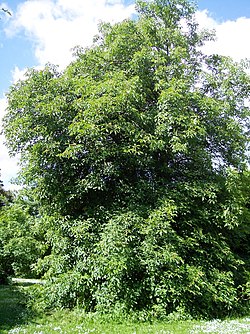
Ohio is known as the “Buckeye State” because of the abundance of buckeye trees that once covered its hills and plains.[1] The name “buckeye” comes from Native Americans, who called the nut “hetuck,” which means “buck eye” because the markings on the nut resemble the eye of a deer.[1] Ohio became the 17th state to join the union on March 1, 1803.[2] Ohio is the 34th largest state in the U.S. with an area of 116,103 square miles. Ohio holds a significant place in the history of land surveying in the United States. It was the starting point for the U.S. Public Land Survey, which began in 1786. This was the first major cadastral survey undertaken by any nation.[3]
Ohio’s economy ranks 7th in size among states and Washington, DC. The state had a GDP of $822.67 billion in 2022.[4] In November 2023, the unemployment rate in Ohio was 3.6%. In the 3rd quarter of 2023, the real GDP growth rate for Ohio was 4.6% per year.[4] Ohio has a population of 11,794,256.[5] Ohio is considered a center of science and industry, with museums dedicated to such in Columbus, the Center of Science and Industry, the Great Lakes Science Center in Cleveland, the Imagination Station in Toledo, and the Boonshoft Museum of Discovery in Dayton. The state includes many historically strong industries, such as banking and insurance, motor vehicle manufacturing, research and development, and steel production.[5] Ohio has the second largest Amish population in the United States next to Pennsylvania.
Research your ancestors on MyHeritage
History of OhioHistory of Ohio
Native Americans speaking Algonquin languages had inhabited Ohio and the central midwestern United States for hundreds of years, until displaced by the Iroquois in the latter part of the 17th century. The recorded history of Ohio began in the late 17th century when French explorers from Canada reached the Ohio River.[6] Following the French and Indian War, the area that is now Ohio was under the control of Britain and after the Revolutionary War, the land became the Northwest Territory controlled by the United States.[6]
Ohio played a key role in providing troops, military officers, and supplies to the Union army during the Civil War. Over 300,000 Ohioans served in the Civil War, the third largest number of soldiers of any Union state.[7] Despite the state’s boasting a number of very powerful Republican politicians, it was divided politically. The state supported the Union in the Civil War, although antiwar Copperheads or Peace Democrats sentiment was strong in southern settlement areas.[8]

Ohio’s industrial structure was built between 1850 and 1880, during which time the value of its manufacturing, stimulated largely by the Civil War, grew to more than twice that of agriculture.[9] By the mid to late nineteenth century, a number of Ohio cities had emerged as industrial centers.[10] Coal mining began in Ohio during the 1810s and 1820s, and coal production skyrocketed in the fifty years after the Civil War.[11]
In the early 1900s, Ohio lacked any large-scale economic opportunity that other midwestern cities such as Chicago and Detroit had. In 1832, the Ohio and Erie Canal was completed and made the region more accessible and increased its economic potential. By the mid to late nineteenth century, a number of Ohio cities had emerged as industrial centers.[10]
From futuristic coffee shops, drive-ins and shopping centers to soaring glass curtain walled skyscrapers and the homes, schools, and churches of postwar suburbs, examples of mid-20th century architecture convey the hopes, challenges and successes of Ohio's recent history.[12]
Demographics of OhioDemographics of Ohio
The demographic distribution of Ohio is as follows:[13]
- White: 79.65%
- Black or African American: 12.34%
- Two or more races: 4.27%
- Asian: 2.35%
- Other race: 1.2%
- Native American: 0.16%
- Native Hawaiian or Pacific Islander: 0.03%
Most common surnames in OhioMost common surnames in Ohio
Researching Family History in OhioResearching Family History in Ohio
The Ohio Department of Health, Office of Vital Statistics preserves Ohio births since 1908, and deaths since 1964. The Ohio State Archives works with state and local governments to preserve the history of Ohio and its citizens. The Ohio Genealogical Society is the largest genealogical society in the United States and has a vast collection of resources. The Ohio History Connection, Archives and Library, previously The Ohio Historical Society has collected and made available over 700,000 archival materials from all of Ohio's 88 counties. The Ohio Memory Project is a collaboration between the Ohio History Connection and the State Library of Ohio. The John Parker Library and FamilySearch Center at the National Underground Railroad Freedom Center offers free access to genealogy resources and online searchable databases. Ohio also has many other county and local record collections and a list of affiliate libraries and other organizations can be found on the Ohio History Connection website.
Ohio County ListOhio County List
| Adams | Allen | Ashland | Ashtabula |
| Athens | Auglaize | Belmont | Brown |
| Butler | Carroll | Champaign | Clark |
| Clermont | Clinton | Columbiana | Coshocton |
| Crawford | Cuyahoga | Darke | Defiance |
| Delaware | Erie | Fairfield | Fayette |
| Franklin | Fulton | Gallia | Geauga |
| Greene | Guernsey | Hamilton | Hancock |
| Hardin | Harrison | Henry | Highland |
| Hocking | Holmes | Huron | Jackson |
| Jefferson | Knox | Lake | Lawrence |
| Licking | Logan | Lorain | Lucas |
| Madison | Mohoning | Marion | Medina |
| Meigs | Mercer | Miami | Monroe |
| Montgomery | Morgan | Morrow | Muskingum |
| Noble | Ottawa | Paulding | Perry |
| Pickaway | Pike | Portage | Preble |
| Putnam | Richland | Ross | Sandusky |
| Scioto | Seneca | Shelby | Stark |
| Summit | Trumbull | Tuscarawas | Union |
| Van Wert | Vinton | Warren | Washington |
| Wayne | Williams | Wood | Wyandot |
See alsoSee also
Explore more about OhioExplore more about Ohio
MyHeritage.com has 118 collections of records from Ohio. Important Ohio collections include, Ohio Marriages, Ohio Births, the Ohio, County Naturalization Records, 1800-1977, Ohio, Stark County Probate Court Registrations and many others.
References
- ↑ 1.0 1.1 Ohio State Nickname | The Buckeye State
- ↑ 98 Interesting Facts About Ohio
- ↑ When Land Surveys Were a Modern Marvel
- ↑ 4.0 4.1 Economy of Ohio Statistics and Data Trends: GDP ranking, unemployment rate, and economic growth | USAFacts
- ↑ 5.0 5.1 IBISWorld - Industry Market Research, Reports, and Statistics
- ↑ 6.0 6.1 Ohio
- ↑ Ohio in the Civil War: Interesting Facts
- ↑ Peace Democrats, Copperheads, Summary, Facts, Significance
- ↑ Ohio - Native American, Settlement, Industrialization | Britannica
- ↑ 10.0 10.1 The past, present, and future of Ohio's economy
- ↑ The Rise of Industrialization in Ohio
- ↑ Ohio Modern Preserving Our Recent Past
- ↑ Ohio Population 2024 (Demographics, Maps, Graphs)
- ↑ Most Common Last Names In Ohio

